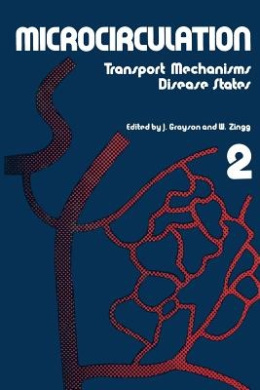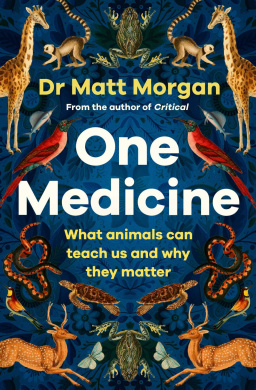Description
The recogmtIon of the microcirculation as an ideal interdisciplinary meeting place for the life sciences is really a postwar phenomenon. The European and the American Societies more than any other organizations launched the idea, and the success of the European Society’s International Meetings gave impetus to a growth of interest from a handful of specialists to the wide interdisciplinary study which microcirculation now represents. The meeting held in Canada in June 1975 was, however, the first truly international meeting devoted to the microcirculation. It, too, was a success from every point of view, and the exchange of knowledge and new ideas was rewarding. It is our present hope that the tradition of European meetings with their characteristic European flavor will continue, but larded by larger, international congresses conceived on a worldwide basis. For the present conference we were fortunate in the presence of Dr. B. Zweifach. He was once referred to as the “father of the microcircula tion.” This claim, unfortunately, I cannot accept. That honor probably belongs to Harvey, who by one of the most brilliant strokes of inductive reasoning in medical history inferred the existence of capillaries though he could not see them. Ben Zweifach’s role was rather that of the midwife, presiding at the birth rather than the conception. The baby he delivered long years ago has since thriven lustily and its growth is in no small measure due to the continuing zeal of Zweifach and his associates. I. Transport Mechanisms in the Microcirculation.- 1. Capillary Transport and Exchange.- 1.1. Introduction.- 1.2. Endothelia and Epithelia.- 1.3. Fractional Equilibration of Small Solutes during Transcapillary Passage.- 1.4. Analytical Approaches to Tracer Exchange.- 1.5. An Osmotic Weight Transient Model for Estimation of Capillary Transport Parameters in Myocardium.- 1.6. Fluid and Solute Flow across the Walls of Single Capillaries in the Frog Mesentery.- 1.7. The Extravascular Turnover Rate Constant Estimated from Single Circulation Tracer Dilution Curves as an Index of Cellular Transport.- 1.8. Effect of the Red Cell Membrane on the Exchange of Materials in the Microcirculation.- 1.9. Interaction of Aqueous and Lipid Pathways in the Pulmonary Endothelium.- 1.10. Capillary Permeability in Some Pathophysiological States.- 2. Molecular and Oxygen Transport.- 2.1. Permeability of Arterial Capillary Endothelium.- 2.2. Serial Barriers to Blood-Tissue Transport in the Cat Salivary Gland Using Single-Passage Multiple Tracer Dilution.- 2.3. A Theoretical Investigation of Fluid Exchange in a Microoccluded Capillary with Axial Variation of Filtration Parameters.- 2.4. Effect of Hyaluronidase on Transcapillary Fluid and Solute Exchange in the Isolated Dog Hindlimb.- 2.5. Transmembrane Ion Transport in Autoperfused Cat Mesentery.- 2.6. Evidence of an Interference in Oxygen Exchange from Erythrocytes to Tissues in Hypertriglyceridemia.- 2.7. O2 Transport in the Homogeneous and the Inhomogeneous Microcirculation.- 2.8. Effect of Elevated Venous Pressure on Intestinal Oxygen Extraction.- 2.9. Effects of Mechanically Increasing Venous Pressure in the Canine Forelimb on Protein Transport during the Local Administration of Histamine and Acetylcholine.- 2.10. Quantitative Measurement of Macromolecular Transport in Mesenteric Membrane.- 2.11. Effect of Histamine on Microvascular Macromolecular Transport.- 2.12. Regulation of Plasma and Interstitial Albumin: A Theoretical Analysis.- 2.13. Transmural Mass Transfer in the Unsteady Microcirculation.- 2.14. Transport of Solutes across the Intact Rat Diaphragm.- 2.15. Albumin Permeability of the Renal Peritubular Capillary: The PS Product.- II. Microcirculation in Disease States.- 3. Effect of Shock on Capillary Transport.- 3.1. Transport of Small Molecules.- 3.2. Bidirectional Capillary Transport of Small Molecules.- 3.3. Oxygen Transport in Shock.- 3.4. The Low Flow State Predisposition of the Venous Microvasculature.- 3.5. Tissue-Blood Transport and Metabolism in Canine Adipose Tissue during Hemorrhage and Shock.- 4. Shock and Microcirculation.- 4.1. Special Features of Disorders of Microcirculation and Transcapillary Exchange during Experimental Shock.- 4.2. Regional Blood Flow following Traumatic Shock.- 4.3. Hemodynamic Response of the Terminal Vasculature in Different Species during Reversible and Irreversible Hemorrhagic Shock.- 4.4. Energy Factors and Insulin Resistance in Hemorrhagic Shock.- 4.5. Quantitation of White Cell Sticking in Hemorrhagic Shock.- 4.6. Microvascular Response to Hemorrhage in the Rat during Nitrous Oxide (N2O) Relaxant Anesthesia.- 4.7. Microcirculation in the Pathophysiology of Endotoxin Shock.- 4.8. Endotoxin-Induced Microcirculatory Disturbances.- 4.9. Role of Skeletal Muscle Venules in the Response to Endotoxin Shock.- 4.10. The Microcirculatory Response to Shock Lung Factor.- 4.11. The Microcirculation in Cardiopulmonary Resuscitation.- 4.12. Effects of Prostaglandins in Endotoxin Shock.- 4.13. Microcirculatory Approach to the Treatment of Shock Using a New Analogue of Vasopressin.- 4.14. Effects of Synthetic Glucocorticoids on Shock-Induced Alterations in Cyclic Nucleotide Metabolism and Lysosomal Enzyme Release.- 5. Hypoperfusion, Ischemia, and Graft Rejection.- 5.1. Interstitial Tissue Barrier during Low Flow: Its Correction by Hyaluronidase.- 5.2. Endonasal Granulomata and Hypoperfusion.- 5.3. Factors Influencing Responses of Single Arterioles to Occlusion.- 5.4. Redistribution of Blood Flow during Cooling and after Total Circulatory Arrest with Profound Hypothermia.- 5.5. Blood Gas Analysis as an Aid in Assessing the Microcirculation in the Ischemic Limb.- 5.6. Microcirculatory Reactions to Controlled Ischemia: AVital Microscopic Study of Hamster Cheek Pouch.- 5.7. Microvascular Elements of Xenograft Lung Rejection..- 5.8. Microangiography of Rejected Human Kidney Transplants.- 5.9. The Role of Vasospasm in Experimental Renal Xenograft Rejection.- 5.10. Progressive Microvascular Obliteration during Canine Renal Allograft Rejection.- 6. Trauma and Inflammation.- 6.1. A Model of Peripheral Vascular Disease and Assessment of Wound Healing by Angiographic and Nuclear Medicine Techniques.- 6.2. Pathology of the Capillary Wall: Diagnosis and Therapy.- 6.3. Potential Role of Prostaglandins in Modulating Vascular Permeability Changes during Inflammation through Local Alterations in Blood Flow (Hyperemia).- 6.4. An in Vivo Quantitative Evaluation of Radiation Damage and Repair to Microcirculation.- 6.5. Electron Microscopic Findings in the Micro vessel Wall Affected by Venom of the Snake Trimeresurus flavoviridis.- 6.6. In Vivo Skin Capillary Abnormalities in Vinyl Chloride Workers.- 6.7. Vascular Function in a Hamster Cervical Carcinoma following X-Irradiation.- 6.8. Role of Tissue Fluid Hyperosmolality: The Pathogenesis of Posttraumatic Fluid Loss.- 6.9. Albumin Compartmental Changes Secondary to Sepsis.- 6.10. Elevation of Plasma Lysosomal Enzyme Levels after Trauma in Association with Impairment of Hepatic Reticuloendothelial Function.- 6.11. Fibrinolytic Activity in the Lungs following Trauma.- 6.12. Platelet Function and Severe Head Injury.- 6.13. Disseminated Intravascular Coagulation and Head Injury.- 7. Diabetic Angiopathy.- 7.1. Diabetic Nephropathy: Form and Function.- 7.2. The Problem of Tissue Oxygenation in Diabetes Mellitus as Related to the Development of Diabetic Angiopathy.- 7.3 The Morphology of Angiopathy.- 7.4. The Chemistry of Angiopathy.- 7.5. Comments.- 8. Diabetes and Microcirculation.- 8.1. Hemorheological Changes in Diabetes Mellitus.- 8.2. Quantitative Studies of von Willebrand Factor (VWF) in Normal and Diabetic Subjects: Role of VWF in Second-Phase Platelet Aggregation.- 8.3. Capillaries of Israeli Diabetics: I.- 8.4. Cutaneous Microangiopathy in Prediabetes, Chemical Diabetes, and Overt Diabetes.- 8.5. Microscars: A Manifestation of Diabetic Microangiopathy.- 8.6. Quantitative Studies of the Retinal Circulation in Juvenile Diabetic Retinopathy.- 8.7. Abnormal Red Cell Aggregation in Diabetic Retinopathy.- 8.8. Insulin Response in Patients on Intravenous Hyperalimentation.- 8.9. Osmolality of Hyperalimentation Solution in Superior Vena Cava.- 8.10. Effect of Aprotinin on the Pancreas of the Rat after Temporary Ischemia: Light and Electron Microscopic Investigations.- 8.11. Diabetic Retinopathy: A Challenge to Treatment.- 9. Tumors, Cancer, and Muscular Dystrophy.- 9.1. Laser-Induced Microvascular Injury and Tumor-Cell Lodgement.- 9.2. Effects of Epinephrine on Increasing Arterial Perfusion of Experimental Liver Metastases.- 9.3. Changes in Intrahepatic Tumor Circulation Due to Increasing Tumor Growth.- 9.4. Unusual Localization of Kaposi’s Sarcoma with Histological and Electron Microscopic Findings.- 9.5. Alterations in the Microvasculature of Various Tissues in Murine Muscular Dystrophy.- 10. Blood Pressure and Hypertension.- 10.1. Ultrastructure of Arteriolar Nephropathy in Hypertension.- 10.2. Microvascular Characteristics in the Renovascular Hypertensive Rat.- 10.3. Elastosis of Renal Arterioles in Hypertension.- 10.4. On the Nature of Human Activatable Renin.- 10.5. Effects of Acute Hypertension on Pial Microcirculation in Rats.- 10.6. Microvascular Effects of Propranolol in the Spontaneously Hypertensive Rat.- 10.7. Inhibition of Actions of the Fungal Protease Brinolase on the Vasopeptide (Kinin) System.- 10.8. Kininogen and Kininase Activity in Patients with Acute Myocardial Infarction.






